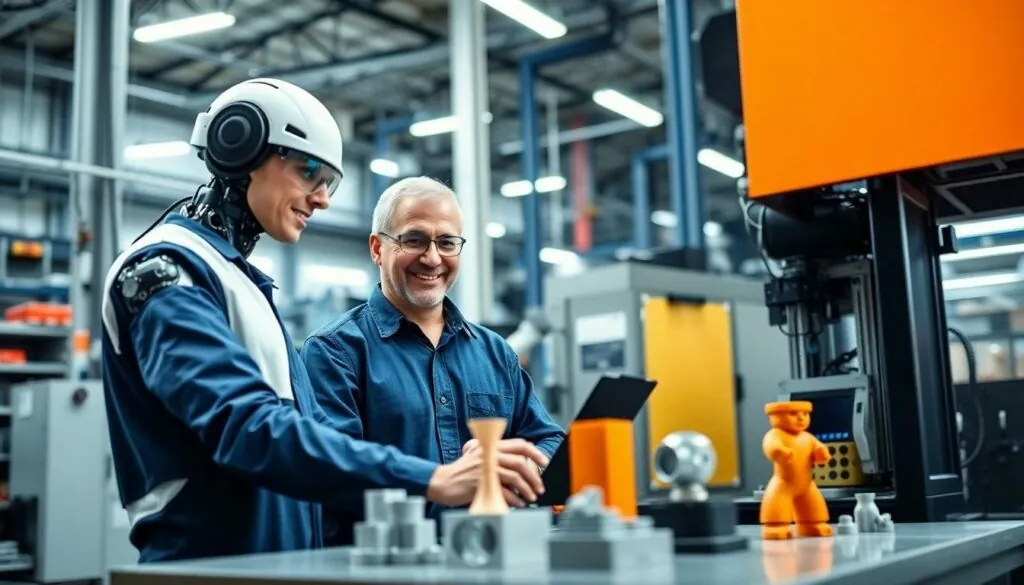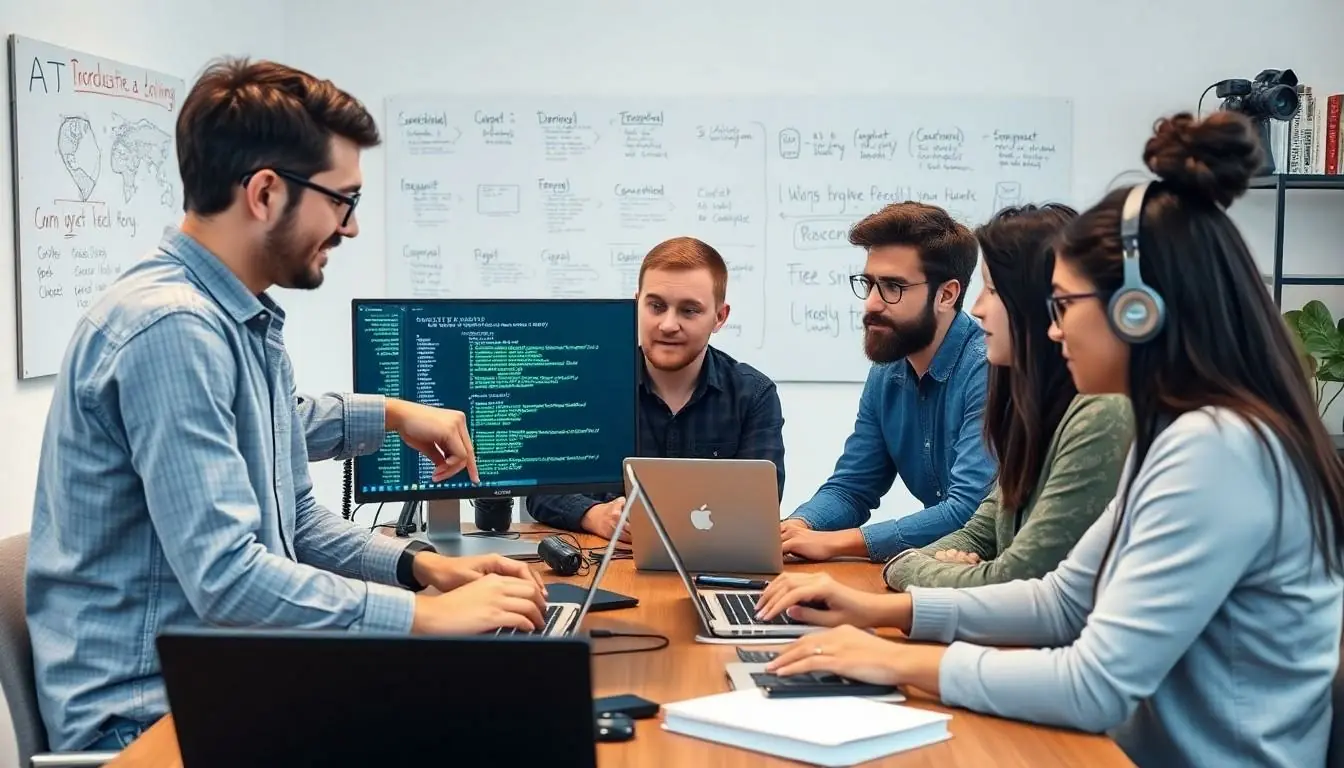In a world where robots might just be plotting to overthrow humanity, emerging manufacturing technologies are here to save the day—or at least make it a lot more interesting. From 3D printing that turns dreams into tangible objects to AI-driven systems that can outsmart even the most seasoned workers, the future of manufacturing is nothing short of thrilling.
These innovations aren’t just about fancy gadgets; they’re revolutionizing how products are made, creating efficiencies that would make even the most diligent factory worker raise an eyebrow. As industries adapt to these cutting-edge solutions, they’re not just keeping up with the times—they’re sprinting ahead. Buckle up as we dive into the fascinating world of manufacturing technologies that are reshaping production lines and redefining what it means to be efficient in the 21st century.
Table of Contents
ToggleOverview of Emerging Manufacturing Technologies
Emerging manufacturing technologies reshape the industry landscape, driving innovation across various sectors. 3D printing remains a prominent force, allowing for rapid prototyping and customization. With this technology, manufacturers create intricate designs directly from digital files, significantly speeding up the product development cycle.
Artificial Intelligence (AI) integrates seamlessly within manufacturing processes. AI-driven systems analyze vast datasets, optimizing production efficiency and reducing waste. Companies leverage machine learning algorithms to predict maintenance needs, improving equipment longevity.
Additionally, the Internet of Things (IoT) connects machines and devices, enabling real-time data exchange. Smart sensors monitor equipment performance and provide insights that guide decision-making. These insights lead to enhanced operational efficiency and reduced downtime.
Robotic automation continues to expand its role in manufacturing. Automated systems now handle tasks ranging from assembly to quality control, enhancing productivity. Collaborative robots, or cobots, work alongside human operators, improving safety and efficiency on the production floor.
Additive manufacturing also plays a vital role. This technique builds objects layer by layer, allowing for complex shapes that traditional methods cannot achieve. Industries such as aerospace and healthcare utilize additive manufacturing for creating lightweight components and custom medical devices.
Blockchain technology gains traction within the supply chain. By providing a secure and transparent method for tracking materials and products, manufacturers ensure quality and authenticity. This technology fosters trust among stakeholders and streamlines operations.
As these technologies emerge, they promise to redefine productivity, quality, and collaboration within the manufacturing sector. Each advancement contributes valuable capabilities, positioning manufacturers to meet the evolving demands of the marketplace.
Key Trends in Manufacturing Technology

Manufacturing technology is rapidly evolving, driven by various innovative trends. Automation and robotics lead the charge in enhancing efficiency, while additive manufacturing represents a revolutionary approach in production.
Automation and Robotics
Automation integrates advanced technologies in manufacturing processes. Robotic systems handle repetitive tasks, improving accuracy and reducing production times. They not only increase output but also enhance safety by taking on dangerous jobs. Collaborative robots, or cobots, work alongside human workers, promoting a safer environment while boosting productivity. Data analytics optimize these robotic systems, allowing for real-time adjustments and predictive maintenance. These advancements collectively transform traditional manufacturing into smarter operations.
Additive Manufacturing
Additive manufacturing, commonly known as 3D printing, enables the production of complex geometries with precision. This technology allows for rapid prototyping, reducing lead times in product development. Customization becomes feasible, catering to unique consumer needs across industries. Cost efficiency increases, as manufacturers can produce items on-demand, minimizing excess inventory. Industries like aerospace and healthcare benefit significantly, as intricate designs can enhance performance and functionality. Overall, additive manufacturing drives innovation while establishing new production standards.
Impact of Emerging Manufacturing Technologies
Emerging manufacturing technologies significantly influence the industry landscape. Innovations are improving various aspects, from productivity to sustainability.
Efficiency and Productivity
Advanced manufacturing technologies enhance efficiency and productivity throughout operations. Robotics increasingly handle repetitive tasks, improving speed and precision in production lines. AI-driven analytics optimize workflows by predicting maintenance needs and reducing downtime. 3D printing supports rapid prototyping, allowing for quick feedback and iterations, which shortens the product development cycle. Automating routine operations leads to better resource allocation, enabling workers to focus on more complex issues. Overall, these technologies significantly transform manufacturing processes, positioning firms to maximize output and maintain competitiveness.
Sustainability and Environmental Considerations
Emerging technologies also address sustainability and environmental concerns in manufacturing. Additive manufacturing minimizes material waste by using only needed materials during production. Energy-efficient machinery reduces overall energy consumption while lowering operational costs. The implementation of IoT drives better tracking of resource use, which promotes sustainability initiatives. More manufacturers adopt blockchain technology to enhance supply chain transparency, ensuring responsible sourcing and ethical practices. Emphasizing sustainable practices, these technologies reshape industry standards and contribute to a greener future.
Challenges Facing Adoption
Emerging manufacturing technologies face several challenges that hinder widespread adoption. Addressing these obstacles is crucial for maximizing the benefits of innovations.
Cost and Investment
High costs can deter manufacturers from adopting new technologies. Investments in emerging technologies often require significant initial capital, leading to financial hesitation. Many manufacturers, particularly small and medium-sized enterprises, struggle with budget constraints that inhibit technology integration. Continuous maintenance and upgrades also add to the financial burden. Businesses need to weigh the potential return on investment against these high capital outlays. In contrast, larger organizations usually find it easier to allocate funds for advanced manufacturing technologies, creating a disparity in adoption rates across the industry.
Skill Gaps in the Workforce
Workforce skill gaps present another barrier to adopting emerging technologies. Many employees lack the necessary training to operate advanced manufacturing equipment effectively. Organizations face challenges in retraining existing workers while simultaneously attracting new talent with the right skill set. The rapid pace of technological innovation often outstrips current educational programs, leaving a mismatch between skills and industry needs. Additionally, manufacturers often rely on external training providers, which can complicate the upskilling process. As a result, bridging this skill gap is vital for unlocking the full potential of new technologies.
Future of Emerging Manufacturing Technologies
Emerging manufacturing technologies promise to reshape industry dynamics significantly. Companies increasingly invest in advancements like 3D printing, artificial intelligence, and robotics. These technologies enhance production capabilities, streamline processes, and foster innovation. As automation becomes more prevalent, manufacturers gain the ability to expedite workflows and elevate product quality.
Data-driven insights from AI analytics lead to proactive maintenance and optimized operations. Real-time data connectivity through IoT plays a crucial role in enabling seamless communication between machines, further enhancing efficiency. In industries such as aerospace and healthcare, additive manufacturing allows for the production of intricate structures that meet specific needs.
Sustainability stands at the forefront of emerging technology discussions. New solutions aim to minimize waste while promoting energy efficiency, aligning with global environmental goals. Manufacturers adopting these technologies improve their operational footprint and demonstrate a commitment to responsible practices.
Collaboration among robotics and human workers continues to evolve. Robots, including cobots, are not only enhancing productivity but also ensuring a safer work environment. The synergy between humans and machines creates opportunities for improved workflows and innovative problem-solving.
Despite the promising landscape, challenges persist in the adoption of these technologies. High implementation costs remain a barrier, particularly for small and medium-sized enterprises. Enhancing workforce skills is essential for maximizing the benefits of new technologies. Bridging skill gaps enables organizations to fully leverage advancements and stay competitive in an evolving marketplace.
Focus on integrating these technologies prepares manufacturers to meet future demands, driving the next wave of industrial transformation.
Emerging manufacturing technologies are set to revolutionize the industry by enhancing efficiency and sustainability. Innovations like 3D printing and AI-driven systems are not just improving production capabilities but also reshaping how products are developed and delivered. The integration of robotics and IoT is streamlining operations while promoting safer work environments.
As manufacturers navigate the challenges of high costs and skill gaps, the focus on workforce training and investment in new technologies will be crucial. The future looks promising as these advancements continue to evolve, paving the way for increased productivity and a more sustainable manufacturing landscape. Embracing these changes will be essential for staying competitive in an ever-evolving marketplace.





